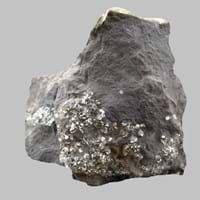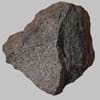Definition
Obsidian is a naturally occurring volcanic glass formed as an extrusive igneous rock. It is produced when felsic lava extruded from a volcano cools rapidly with minimum crystal growth
Argillites are highly compact sedimentary or slightly metamorphosed rocks that consist largely or wholly of particles of clay or silt but lack the fissility of shale or the cleavage characteristic of slate
Discoverer
Obsius
Unknown
Etymology
From Latin obsidianus, misprint of Obsianus (lapis) (stone) of Obsius
From Latin Argilla (clay) and -ite in English which became agrilla+ -ite = Argillite
Class
Igneous Rocks
Sedimentary Rocks
Sub-Class
Durable Rock, Medium Hardness Rock
Durable Rock, Soft Rock
Group
Volcanic
Not Applicable
Other Categories
Opaque Rock
Fine Grained Rock, Opaque Rock
Texture
Glassy
Clastic, Polished
Color
Black, Blue, Brown, Green, Orange, Red, Tan, Yellow
Dark Grey to Black, Pink, Red, White
Durability
Durable
Durable
Scratch Resistant
Yes
Yes
Appearance
Shiny
Rough and Dull
Interior Uses
Decorative Aggregates, Interior Decoration
Decorative Aggregates, Homes, Interior Decoration
Exterior Uses
Garden Decoration
As Building Stone, Garden Decoration, Office Buildings
Other Architectural Uses
Not Yet Used
Curbing, Whetstones
Construction Industry
Arrowheads, Cutting Tool, Knives, Scrapers, Spear Points
Used for flooring, stair treads, borders and window sills.
Medical Industry
Surgery
Not Yet Used
Antiquity Uses
Artifacts, Jewellery
Artifacts, Monuments, Sculpture
Commercial Uses
Creating Artwork, Mirror, Used in aquariums
Fire resistant, Used to manufracture paperweights and bookends
Types
Fireworks Obsidian, Mahogany, Sheen Obsidian, Snowflake obsidian and Velvet Peacock Obsidian
Not Available
Features
Blocks negativity, Helps to protect against depression
Is one of the oldest rock
Archaeological Significance
Monuments
Not Yet Used
Used
Famous Monuments
Not Applicable
Data Not Available
Sculpture
Not Yet Used
Used
Famous Sculptures
Not Applicable
Data Not Available
Figurines
Not Yet Used
Used
Formation
When the lava is released from volcano, it undergoes a very rapid cooling which freezes the mechanisms of crystallization. The result is a volcanic glass with a uniform smooth texture.
An argillite is a fine-grained sedimentary rock mainly composed of clay particles which forms from lithified muds which contain variable amounts of silt-sized particles.
Mineral Content
Not Available
Biotite, Chlorite, Feldspar, Micas, Muscovite or Illite, Plagioclase, Pyrite, Quartz
Compound Content
Aluminium Oxide, CaO, Iron(III) Oxide, FeO, Potassium Oxide, MgO, MnO, Sodium Oxide, Phosphorus Pentoxide, Silicon Dioxide, Titanium Dioxide
Iron(III) Oxide, Potassium Oxide, MgO, Silicon Dioxide
Types of Metamorphism
Burial Metamorphism, Cataclastic Metamorphism, Contact Metamorphism
Not Applicable
Types of Weathering
Biological Weathering, Chemical Weathering, Mechanical Weathering
Biological Weathering
Types of Erosion
Chemical Erosion, Coastal Erosion, Glacier Erosion
Chemical Erosion
Grain Size
Not Applicable
Fine Grained
Fracture
Conchoidal
Conchoidal to Uneven
Streak
White
White to Grey
Porosity
Very Less Porous
Highly Porous
Luster
Vitreous
Waxy and Dull
Compressive Strength
Not Available
Cleavage
Non-Existent
Slaty
Toughness
Not Available
2.6
Specific Gravity
2.6-2.7
2.56-2.68
Transparency
Translucent
Opaque
Density
2.6 g/cm3
2.54-2.66 g/cm3
Resistance
Heat Resistant, Impact Resistant
Heat Resistant, Impact Resistant
Deposits in Eastern Continents
Asia
Afghanistan, Indonesia, Japan, Russia
Bangladesh, China, India, Russia
Africa
Kenya
Ethiopia, Kenya, Morocco, South Africa, Tanzania
Europe
Greece, Hungary, Iceland, Italy, Turkey
Austria, France, Germany, Greece, Italy, Romania, Scotland, Spain, Switzerland
Others
Not Yet Found
Not Yet Found
Deposits in Western Continents
North America
Canada, Mexico, USA
USA
South America
Argentina, Chile, Ecuador, Peru
Bolivia, Chile, Colombia, Ecuador, Peru, Venezuela
Deposits in Oceania Continent
Australia
New Zealand
New South Wales, New Zealand, Queensland, Victoria, Western Australia
All about Obsidian and Argillite Properties
Know all about Obsidian and Argillite properties here. All properties of rocks are important as they define the type of rock and its application. Obsidian belongs to Igneous Rocks while Argillite belongs to Sedimentary Rocks.Texture of Obsidian is Glassy whereas that of Argillite is Clastic, Polished. Obsidian appears Shiny and Argillite appears Rough and Dull. The luster of Obsidian is vitreous while that of Argillite is waxy and dull. Obsidian is available in black, blue, brown, green, orange, red, tan, yellow colors whereas Argillite is available in dark grey to black, pink, red, white colors. The commercial uses of Obsidian are creating artwork, mirror, used in aquariums and that of Argillite are fire resistant, used to manufracture paperweights and bookends.










